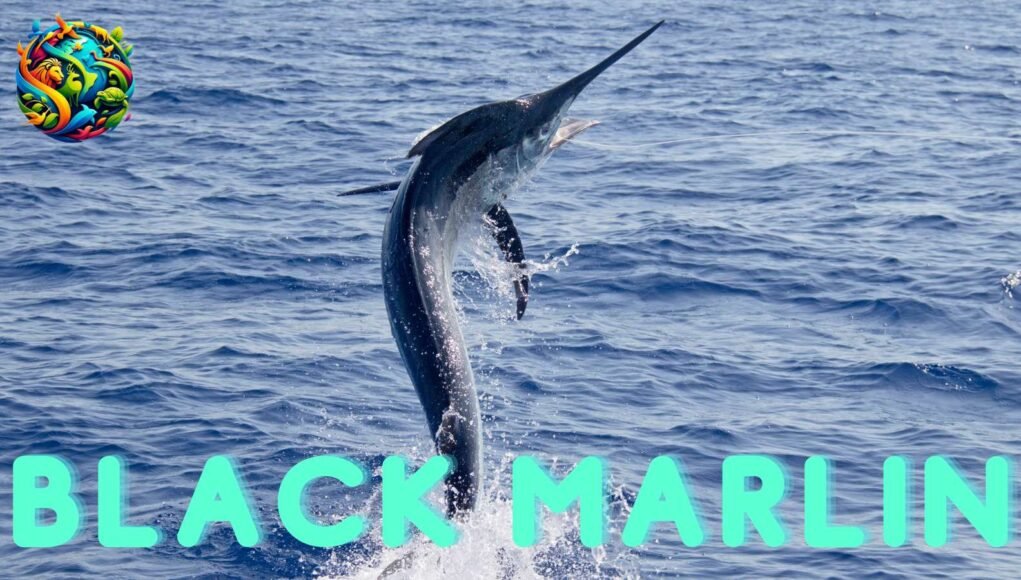Black Marlin: The Ocean’s Ultimate Speedster and Powerhouse
Introduction:
The Black Marlin (Istiompax indica) is one of the most powerful and fastest fish in the ocean. It is a species of billfish known for its immense speed, strength, and spectacular leaps. This apex predator dominates tropical and subtropical waters, making it a highly sought-after species for sport fishing and marine research.
They can reach speeds exceeding 80 mph (129 km/h), making them one of the fastest fish in the world. With their elongated bodies, sharp bills, and immense stamina, these oceanic warriors are built for high-speed chases and deep-sea battles.
Amazing Facts:
- One of the Fastest Fish on Earth: the Black Marlin, is estimated to reach speeds of up to 80 mph (129 km/h).
- Massive Size: This species can grow up to 15 feet (4.6 meters) long and weigh over 1,600 pounds (725 kg).
- Powerful Jumps: They are known for their ability to leap high above the water’s surface.
- Long-Distance Travellers: They migrate thousands of miles across oceans to find food and suitable breeding grounds.
- Extremely Strong Fighters: Once hooked, a Black Marlin can fight for hours, making it a prized catch in sport fishing.
- Sharp Bill for Hunting: They use their sword-like bill to stun and injure prey.
- Found in Warm Waters: They prefer tropical and subtropical waters, mainly in the Pacific and Indian Oceans.
- Fastest Growing Fish: They grow extremely quickly, reaching 200 pounds in their first year.
- Solitary Hunters: Unlike some billfish, Black Marlins prefer to hunt alone.
- Colour-Changing Ability: Their body changes colour when excited, transitioning from dark blue to silver.
Habitat and Diet:
Habitat:
They inhabit the warm tropical and subtropical waters of the Pacific and Indian Oceans. Some key locations where they are commonly found include:
- The Great Barrier Reef (Australia)
- The Coral Triangle (Southeast Asia)
- The Indian Ocean (Off the coasts of India and Madagascar)
- The Western Pacific Ocean (Near Japan and the Philippines)
- The Eastern Pacific (Near Mexico and Ecuador)
They prefer the epipelagic zone (0–200 meters deep), where they have access to plenty of food.
What Do Black Marlins Eat?
They are carnivorous predators, primarily feeding on:
- Mackerel
- Tuna
- Sardines
- Squid
- Flying fish
- Dolphinfish (Mahi Mahi)
They rely on their speed and sharp bill to slash through schools of fish, stunning or injuring them before swallowing them whole.
Appearance:
They have a sleek, torpedo-shaped body, built for speed and endurance.
- Size: Can grow up to 15 feet (4.6 meters) long.
- Weight: Can weigh over 1,600 pounds (725 kg).
- Colour: dark blue or black on the back, silvery-white on the belly.
- Bill: Long, spear-like snout used for hunting.
- Dorsal Fin: stiff and short, unlike the more prominent sail of the sailfish.
Types and Subspecies of Black Marlins:
There is only one recognised species of Black Marlin (Istiompax indica), but they are sometimes classified based on regional differences in size and habitat preferences.
However, they belong to the broader billfish family, which includes:
- Blue Marlin (Makaira nigricans)
- White Marlin (Kajikia albida)
- Striped Marlin (Kajikia audax)
- Sailfish (Istiophorus)
Each of these species has unique physical and behavioural traits, but the Black Marlin is among the largest and most powerful.
Predators and Threats:
Natural Predators:
Despite being one of the top predators in the ocean, Black Marlins still face threats from:
- Large Sharks (Great White, Tiger Shark, Mako Shark)
- Orcas (Killer Whales)
- Other Billfish (Blue Marlins and Swordfish may compete and attack juveniles)
Human-Related Threats:
- Overfishing: Black marlins are often caught in commercial fishing nets.
- Bycatch in Tuna Fisheries: They frequently get caught in tuna longlines and gillnets.
- Climate Change: Rising ocean temperatures affect their migratory routes.
- Pollution: Plastic waste and marine toxins can harm them indirectly.
Although Black Marlins are not currently endangered, conservation efforts are essential to protect their populations.
Mating and Reproduction:
They have a unique breeding strategy:
- Spawning occurs in warm tropical waters.
- Females release millions of eggs, increasing the chances of survival.
- Eggs hatch within a few days, and the larvae grow rapidly.
The high reproductive rate helps balance the threats they face from predators and fishing.
How Black Marlins Communicate:
Black Marlins communicate through:
- Colour Changes: Their body can change colour to signal aggression or excitement.
- Body Language: Fin movements and tail slaps help signal dominance or mating interest.
- Hydrodynamic signals: sudden movements in the water allow them to communicate silently.
Movies Featuring Black Marlins:
- “Blue Planet II” (2017): features stunning footage of Black Marlins hunting.
- “Big Fish” (2003): contains a reference to marlins.
- “Fishing the World” (2015): showcases Black Marlin fishing in Australia.
How ‘Black Marlin’ is Pronounced in Different Languages:
- Spanish: Marlín Negro
- French: Martin Noir
- German: Schwarzer Marlin
- Italian: Marlin Nero
- Chinese: 黑马林鱼 (Hēi mǎ lín yú)
- Japanese: ブラックマーリン (Burakku Mārin)
- Arabic: مارلين الأسود (Marlin al-Aswad)
FAQs:
1. How fast can Black Marlins swim?
They can reach speeds of 80 mph (129 km/h), making them one of the fastest fish in the ocean.
2. How big do Black Marlins get?
They can grow up to 15 feet (4.6 meters) long and weigh over 1,600 pounds (725 kg).
3. Are they dangerous to humans?
No, but they can cause injury with their sharp bills if mishandled.
4. Are they endangered?
Currently, they are not endangered, but overfishing remains a concern.
5. Where can I find them?
They are commonly found in the Indian and Pacific Oceans, especially near Australia, Southeast Asia, and Central America.
This article provides a detailed and scientific look at Black Marlins, their behaviour, and their significance in marine ecosystems. Let me know if you’d like further additions or modifications!




